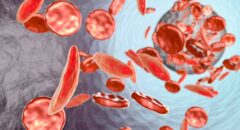
According to the National Sleep Foundation’s 2005 Sleep in America poll, 60% of adult drivers – about 168 million people – say they have driven a vehicle while feeling drowsy in the past year, and more than one-third, (37% or 103 million people), have actually fallen asleep at the wheel!
MUST READ: Yummy Memorial Day Cocktail Recipes
Celebrate great health! LIKE BlackDoctor.org on Facebook!
In fact, of those who have nodded off, 13% say they have done so at least once a month. Four percent – approximately eleven million drivers – admit they have had an accident or near accident because they dozed off or were too tired to drive.
MUST READ: Is This The Real Reason Chris Brown Dissed Rihanna?
The National Highway Traffic Safety Administration conservatively estimates that 100,000 police-reported crashes are the direct result of driver fatigue each year. This results in an estimated 1,550 deaths, 71,000 injuries, and $12.5 billion in monetary losses. These figures may be the tip of the iceberg, since currently it is difficult to attribute crashes to sleepiness.
- There is no test to determine sleepiness as there is for intoxication, i.e. a “Breathalyzer”.
- State reporting practices are inconsistent. There is little or no police training in identifying drowsiness as a crash factor. Every state currently addresses fatigue and/or sleepiness in some way in their crash report forms. However, the codes are inconsistent and two states (Missouri and Wisconsin) do not have specific codes for fatigue and/or fell asleep.
- Self-reporting is unreliable.
- Drowsiness/fatigue may play a role in crashes attributed to other causes such as alcohol. About one million such crashes annually are thought to be produced by driver inattention/lapses.
- According to data from Australia, England, Finland, and other European nations, all of whom have more consistent crash reporting procedures than the U.S., drowsy driving represents 10 to 30 percent of all crashes.
Who is at risk?
MUST READ: 10 Flattering Bathing Suits For Memorial Day Weekend [PHOTOS]
Sleep related crashes are most common in young people, especially men, adults with children and shift workers. According to the NSF’s 2002 poll:
- Adults between 18-29 are much more likely to drive while drowsy compared to other age groups (71% vs. 30-64, 52% vs. 65+, 19%).
- Men are more likely than women to drive while drowsy (56% vs. 45%) and are almost twice as likely as women to fall asleep while driving (22% vs. 12%).
- Adults with children in the household are more likely to drive drowsy than those without children (59% vs. 45%).
- Shift workers are more likely than those who work a regular daytime schedule to drive to or from work drowsy at least a few days a month (36% vs. 25%).
- Sleep deprivation increases the risk of a sleep-related crash; the less people sleep, the greater the risk.
- According to a study by the AAA Foundation for Traffic Safety, people who sleep six to seven hours a night are twice as likely to be involved in such a crash as those sleeping 8 hours or more, while people sleeping less than 5 hours increased their risk four to five times.
- A study by researchers in Australia showed that being awake for 18 hours produced an impairment equal to a blood alcohol concentration (BAC) of .05, and .10 after 24 hours; .08 is considered legally drunk.
MUST READ: Ten Songs For Your Summer BBQ Playlist
Tips To Avoid Drowsy Driving
- Don’t even get on the road if you feel the slightest bit sleepy. If you’re yawning and can barely keep your eyes open before you get on the road, it’s only going to make matters worse once you’re in the vehicle en route to your destination.
- It goes without saying, but you have to make sure to get between seven and eight hours of sleep a night, especially if you’re doing a long drive. Take a warm bath, have a glass of chamomile tea and breathe in some lavender or jasmine before you get into bed to ensure that you can have a restful night of slumber.
- Pull over and take advantage of those rest stops alongside the road; that’s what they are there for. Most of them let you sleep there for up to two hours; that can be just what you need to catch up on your rest and get refreshed before you get back on the highway. If you can’t make it to the rest stop, just pull over. Arriving alive is better than arriving late or not at all! Also consider parking at a hotel or store parking lot.
- Drink caffeine. If you’re on the road and not able to stop, a large Mountain Dew, Red Bull, or cup of Joe can give you the jolt you need to make it to the next rest stop or your destination.
- Share the driving duties. Are there passengers in your car that are wide awake and ready to drive? Have them take over at the wheel so you can get some rest and you can all arrive alive.
- Sing along. While you’re in the mood to blast something, how about your radio? Turn it up as loud as you can stand it and sing along. Keep doing this until you’re able to pull over and rest for a bit.
- Don’t’ drive between midnight and 6 a.m. This is a high-risk situation. Scheduling a trip at another time is a simple way to reduce risk, especially if the drive is long. For shift workers, you should make it a priority to get sufficient rest and take all precautions to not drive drowsy.








